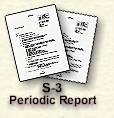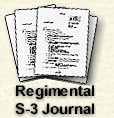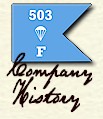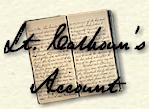
No. 5
191800I February 45
to
201800I February 45 |
3. OUR
OPERATIONS:
a.
Infantry: Our troops continued
the assaulting of enemy caves and emplacements. In the BREAKWATER POINT
area, fifty three (53) caves were sealed by demolitions, more were cleaned
of enemy. In the ICE PLANT (32.7-40.8) vicinity nine (9) caves were sealed.
In the BATTERY POINT area many tunnels were cleared and caves and gun
emplacements from MORRISON POINT west were exploited, nine (9) being
blown. What appeared to have been a medium tank was found in JAMES
RAVINE. This had been demolished on 19-20-45 by direct hit by a five
hundred pound bomb. In conjunction with an air strike, the CAPE CORREGIDOR
area was cleared at least temporarily. Three (3) emplacements were sealed,
others cleared. In the SEARCHLIGHT POINT area troops, in conjunction with
Naval gunfire support, cleaned the area. Caves sealed by demolitions this
report - 79; to date - 84."
4. CASUALTIES:
a.
Our
Casualties:
10 KIA, 27 MIA, 7 Jump IIA
(additional reported), 13 MIA.
To Date- 85 KIA, 234 WIA,
193 Jump IIA, 13 MIA.
b.Enemy Known
Casualties:
This Report
- 255 KIA, 3 Pw
To date- 1838 KIA, 3 Pw." |
|
|
|
|

#88 0800 |
Very quiet
night except for our own artillery keeping harassing fire on all
draws thruout the night. Flares kept over Malinta Tunnel area
all night. Air strikes being planned on pt (39.5-40.1) at 1300
hour. Also naval bombardment of caves in cliffs between
Searchlight Point and Breakwater Point. "C" Co. to follow naval
bombardment and seal up caves with demolitions. |
|
#89 1045 |
Air strikes on
area of (39.5-40.1) with 24-500 # bombs. ”C” Co.* reconnoitered area
after strike and reported the air strike as excellent. Bomb made a
direct hit on a light tank & truck well camouflaged and destroyed
completely. Numerous caves found and occupied by dead Japs. These
caves were sealed by demolitions. Underground barracks and large
tunnel blew from inside and stench very bad throughout the whole
area. Water storage purification plant destroyed. One searchlight
power unit and truck well camouflaged and intact also found. Area
well searched and everything destroyed and all dead Japs. Stench in
whole draw bad. |
*This is not “C”
Company but “E” Company operating in James Ravine.
“C” Company was on the south side of Topside. |
|
#90 1045 |
Navy strike on
area between Searchlight point and Breakwater Point. "C" Co.
followed in cleaning up caves and sealing them shut by demolitions.
Captured a lot of Jap automatic weapons of all types and uncovered
number of dead Japs covered up by our own and their demolitions.
"C" Co occupied area during the nite and planned to complete job 21
Feb. During the nite enemy opened up on them from caves & 4 KIA -
our own troops |
|
#91 1000 |
"3rd Bn CP
moved to new location at (32.2-40.3). "H" Co cleaned area around
Battery Point and sealed eight caves. "I" Co spotted Japs setting
up mortars to hit "I" Co CP and killed 11 Japs at (32.5-40.1). "I"
Co also closed 53 caves in this area during days patrolling.” |
|
#92 2400 |
Except for fire
of "C" Co no action during the nite. Draws kept covered with
periodic artillery fire during the nite again. Fire discipline of
the unit excellent. Areas cleared during the day but Japs seem to
appear from nowhere during the nite. Hill catacombed with caves as
new ones located each day. Enemy killed 1937 (known). A good number
killed in caves by demolitions & suicide - probably another 500.
Our casualties about 500. |
|
#93 1100 |
Msg #1 to XI
Corps. Reporting air strikes and naval strikes preparatory to an
assault by our own troops. |
|
#94 1510 |
Msg #2 to XI
Corp. Reporting air strikes effective and our troops moving in with
light resistance. Caves being closed by demolitions. |
|
#95 2000 |
Situation
report to XI Corp. at end of period. Sent by radio. Msg. #3. |
|
|
|
|
 |
" 0845 The expected banzai
didn't come off and nobody was sorry because they got a chance for a few
hours sleep. But there was plenty of noise. About 1930 last night there
was a detonation and the whole barracks shook. Some thought it was an
earthquake. We discovered later that, on the information of one of the
prisoners, the Navy had exploded over a ton of mines planted in the
channel between the mainland and Corregidor. Just before dark there was
some small arms fire and all thru the night just occasional machine gun
fire. I think the Japs were confused by our new perimeter - if they
had tried to break thru last night, Nips would have been all over the
field. We put out harassing fire all night. 75 Howitzers, 81mm
mortars and even a 40mm were firing all night. Even the P.T. boats
moved in and shelled the underground infantry barracks at Morrison Pt.
Today there's more plans for holing up the tunnels with heavy fire by
one heavy weapon the Navy and I think the Air Corps." |
|
|
|
 |
"Co. occupied perimeter
about 50 yds below western end of drill field. Patrols were sent out
and they blew up one small tunnel." |
|
D Company's perimeter is
now along the line of the NCO Quarters, or where Ed Flash's second
platoon, F Company was the first two nights, so our perimeter had been
drawn in. |
|
|
|
 |
""2/20/45
Last night was very quiet, no enemy movement. 7 Nips KIA today. The
water point was occupied by the 1st and 3rd platoons. The Engr. platoon
has closed up 18 tunnels and cave entrances. The insignia taken from the
Nip bodies show they are the elite of the Jap armed forces or Imperial
Marines. They all have been well armed, well fed and are excellent
shots." |
|
|
|
This is Don Abbott's E
Company History, the much more complete history of the Corregidor
action. |
|
|
|
 |
"Pfc. Homer Patterson was
killed in Sheeney Ravine. The same patrol captured 4 trucks, 2
automobiles & destroyed a 6 inch naval gun." |
|
I don't know where
they got the name Sheeney Ravine. It sounds like they confused it with
the next ravine to the southeast, Cheney Ravine. Sheeney is the one we
believe to be Grubbs Ravine. As far the patrol, their action is brought
out below. |
|
|
|
 |
The entire company left
our bivouac area early and moved down to the areas we occupied the night
of 18-19 February. We were to make a body count to determine the number
of Japs killed that night. I don't know why, because regiment ignored
the count and the action after it was turned in. The 1st platoon moved
to Battery Hearn and started to work. The dead were already bloating and
smelling. After we finished our count in the valley we dubbed it Maggot
Valley. I have already told of the numbers and locations, and how we
did not pull out the smelly, fly-covered bodies. We could get a pretty
close count by estimating the numbers in the two large craters and the
smaller craters. The same was true of the pile in the railroad cut.
After spending the
morning making this count we moved across the shallow valley, the roads
and railroads and made our way up the brushy slopes of Way Hill to the
top where our company CP was located. We were glad to get out of sight
from the valley. The flies were terrible and the smell growing stronger
by the hour as the hot sun seemed to increase the intensity of its
heat. This devastated valley, shorn of all vegetations, pockmarked with
craters filled with dead corpses beginning to rot was the most repulsive
sight and smell imaginable. We hoped never to go around Hearn Magazine
or Maggot Valley again, but for the next week or so this would be our
highway every day.
Soon after we reached the command post a
call came in over the SCR-536 Radio company network from a 2nd platoon
patrol requesting help and stating that they were pinned down on trail
west of Battery Grubbs; furthermore, they had wounded. Lt Bailey ordered
me to take a squad and go to their relief. I took one of my squads (I
believe my 2nd squad, because Richard Lampman was along. I also took
our platoon medic, Roy O. Jensrud. Jensrud was from Hibbing,
Minnesota, and a very dedicated medic. William C. Mathers, who was the
1st platoon leader on Negros, recently told me "That boy would walk
through a machine-gun blast if somebody yelled "Medic." I learned that
on Corregidor.
We headed down the hill
and turned west on the road running down Maggot Valley. We soon could
hear small arms fire and proceeded to the patrol who were lying on Rock
Point Trail on the rim at the edge of the steep drop-off into Grubbs
Ravine. They were firing into the depths of the western end of ravine
where many trees still stood. My immediate concern was for
Pfc Homer Patterson. He
was the only wounded man. A bullet had struck him a few inches below his
arm pit, passed through his body and exited at about the same location
on the other side. The patrol members said as they walked along the
trail they drew fire from the area they were firing into. When
Patterson breathed, blood would bubble from both holes. Jensrud
immediately set about blocking the air from entering these holes. He
placed a compress bandage over each hole and tightly bound them in place
by wrapping strips of a poncho around Patterson's body. Then he got the
plasma going IV. He told me Patterson's lungs were collapsing and if he
did not get immediate medical attention he would die. We quickly
fashioned a litter of tree branches and a poncho. We, my squad and the
patrol, took off at a trot, frequently changing litter bearers. I don't
think it would have been possible to get him to the aid station at
Topside Barracks any faster; however, soon after reaching the station
Patterson died. The loss was hard on all of us, but Jensrud suffered
most of all, even though he had done everything within his human
capabilities to save this life. This was the way so many of our men
died, because they were hit too hard. Loundes County, Mississippi had
lost a son. We had lost a brother.
|
|
|
|

Richard Lampman |
"This 20 February
brings back one of my worst memories. I have never forgotten it, only
the names! I have never had problems watching my own blood but I
have always been squeamish about others - this time with Pfc Homer
Patterson caused me to become very sick." |
|
|
|
|
|
The company roved back to
our bivouac area for the night. The nights were quiet and peaceful
now. We enjoyed being up in the light house and on the water tanks.
During the earlier nights we never knew where the Japs were hiding -
around us, under us, or just where. Now they had to come up to get us.
We were ignorant of the structures on the island. The U.S. built it,
mapped every inch of it , but we had no briefing on the detail of the
fortifications. We had the poorest maps of any operation we
participation in. The 1:25,000 maps were totally inadequate for such a
small island. Today we have the 1932 and 1936 1:200 maps which show the
detail we should have had. So we operated with no details, no names, no
plans of the structure. Only in the few places such as Battery Wheeler
where the name was painted on the structure did we know names. But with
only 850 Japs, defending a lot of detail is not necessary. I believe
that the senior officers who really knew Corregidor were so
indoctrinated with the cloak of secrecy which had always surrounded the
fortress that it never occurred to them that this information should
have been available to us lowly front line soldiers. I was to get a
revelation of this truth in a few days. |
|
|
 |
|
|
 |
|

![]()

![]()